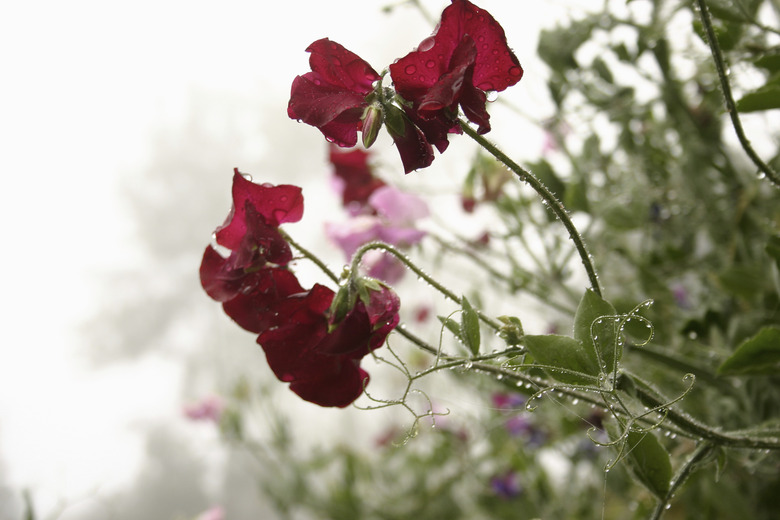How To Control Wild Sweet Pea Vines
Cultivated sweet pea (Lathyrus spp.) is a cottage garden staple. But when sweet peas grow wild, they can naturalize and become a weed. Both annual and perennial varieties will sow themselves from seed, and perennial sweet peas can spread in other ways, too. Sweet peas are not considered a harmful or invasive plant, but they can be annoying when growing where you don't want them. Luckily, there are several ways to control and kill wild sweet peas.
Types of Sweet Pea
Several plants go by the common name of sweet pea. The two most likely to be growing wild are annual sweet pea (Lathyrus odoratus) and perennial sweet pea (Lathyrus latifolius). The perennial vine is also called everlasting pea, and it grows in U.S. Department of Agriculture plant hardiness zones 4 through 7. They grow best in full to partial sun with deep, rich soil that is moist but well drained. It is in these conditions that wild sweet peas will be the hardest to eradicate. Perennial sweet peas are also drought-tolerant, and it is unlikely that simply withholding care will kill them or curtail their growth.
Manual Removal
For annual sweet peas, pulling the plants up or cutting them off to prevent flowering will keep the plant from re-seeding itself and coming back next year. This method is also moderately successful against perennial sweet peas. As with the annual plants, preventing flowering and re-seeding is key to removing sweet peas. For perennial varieties, you also have to remove the roots. Pulling young plants and tilling or cultivating the area where sweet peas grow can eliminate about 80 to 95 percent of the wild sweet peas.
Chemical Control
The most effective way to remove sweet pea weeds is with chemical herbicides. Glyphosate is one of the chemicals that effectively controls wild sweet peas, generally with a kill rate of 95 percent or higher. To apply a concentrated herbicide containing 18 percent glyphosate, dilute at a rate of 3 ounces in each 1 gallon of water. Spray the herbicide on a windless, sunny day when the temperature is above 60 degrees Fahrenheit. Glyphosate can kill desirable plants as well as weeds, so take care to spray only on the wild sweet peas. If the herbicide gets on a plant you want to keep, rinse the plant immediately with clean water. Always read and follow label directions, and wear protective clothing and eye protection when using chemical herbicides. Wash your hands with soap and water immediately after use.
Organic Weed-Control
If you do not want to use chemicals in your yard, manual removal of sweet peas can be supplemented with an organic weed killer. Natural herbicides containing clove oil are moderately effective against sweet peas when used in the spring or early summer. For a natural herbicide containing 34 percent clove oil, mix 1 part herbicide with 10 parts water. To make your own herbicide using clove essential oil, mix 15 drops of clove oil per 1 fluid ounce of water to create a 2.5 percent solution of clove oil. Spray the diluted herbicide to cover sweet pea leaves, taking care not to get the clove oil solution on any desirable plants. Although clove oil is a natural product, you should still wear protective clothing and eye protection when working with it.
References
- Texas Cooperative Extension: Sweet Peas
- Texas Cooperative Extension: Sweet Peas, Continued
- University of Illinois Extension: Perennial Vines
- Brandeis University: Invasive and Exotic Species: Everlasting Pea
- UC Davis: Weed Control Handbook – Everlasting Peavine
- University of California Cooperative Extension: Alternatives Roadside Weed Control in Santa Cruz County
- Weed Science Society of America: Phytotoxic Activity of Clove Oil
